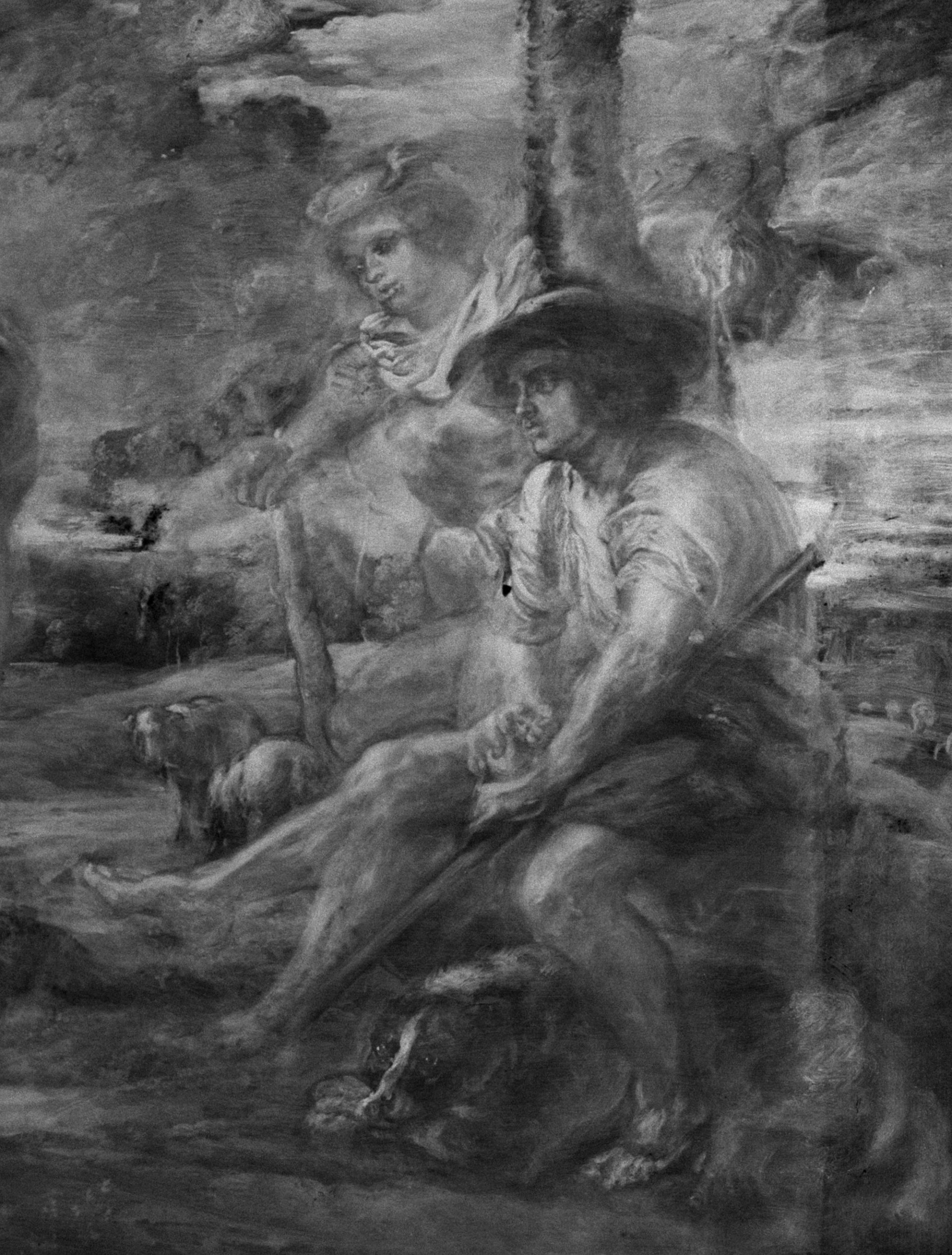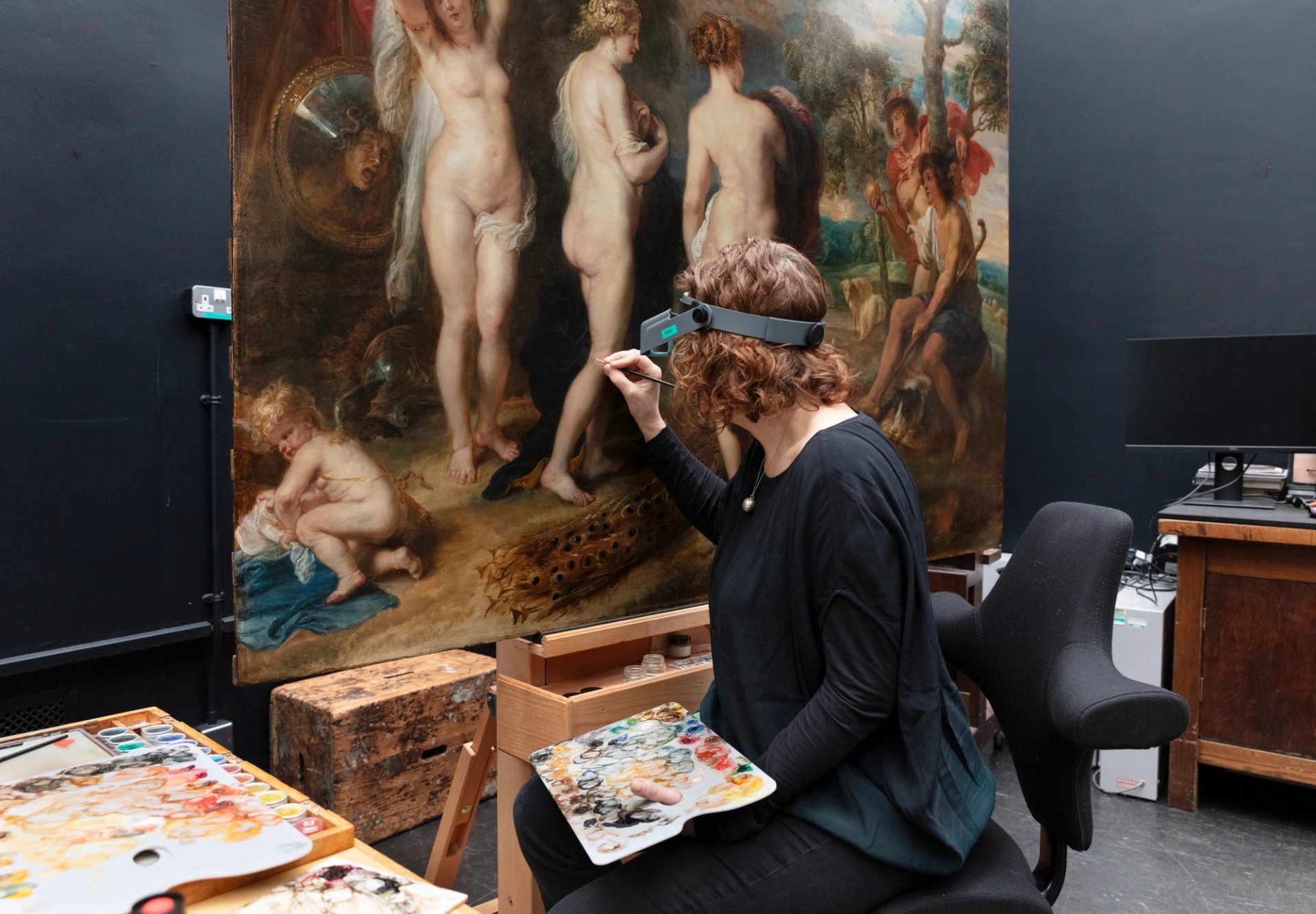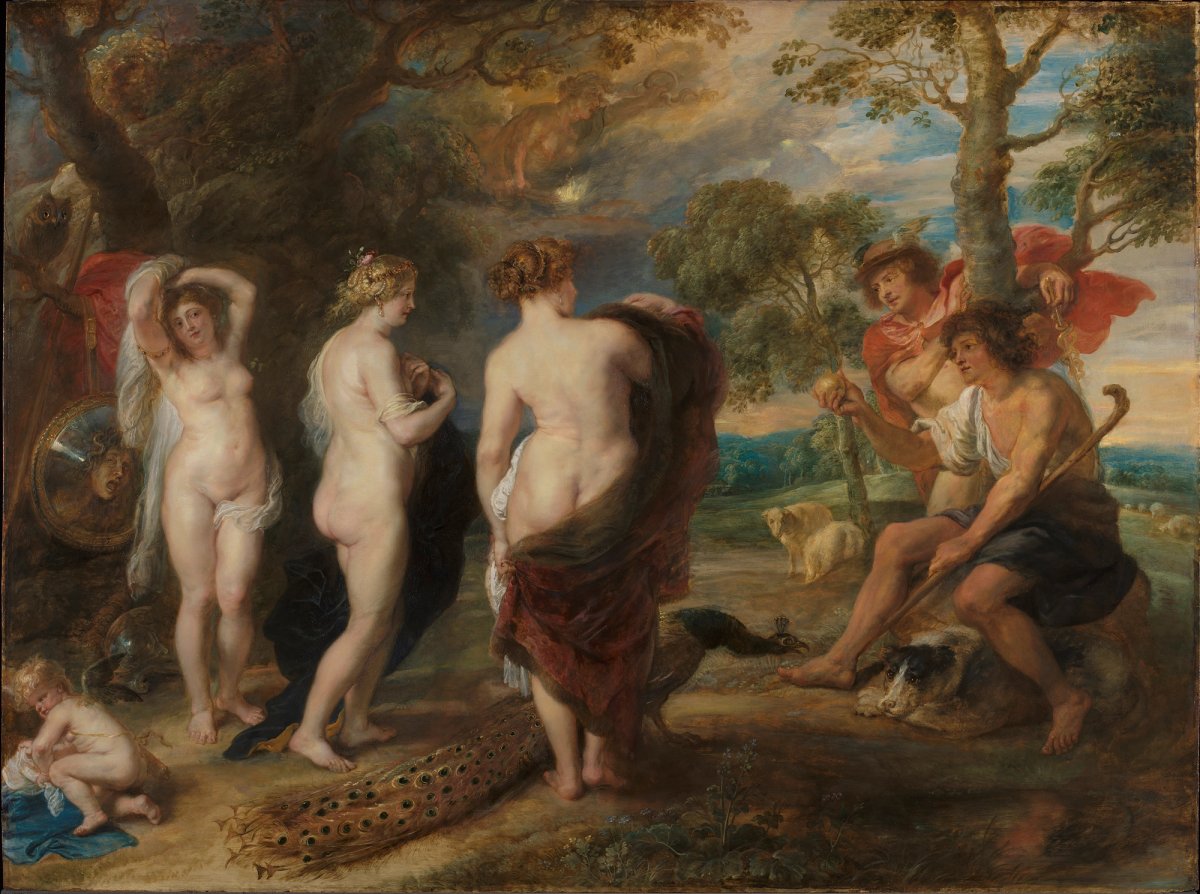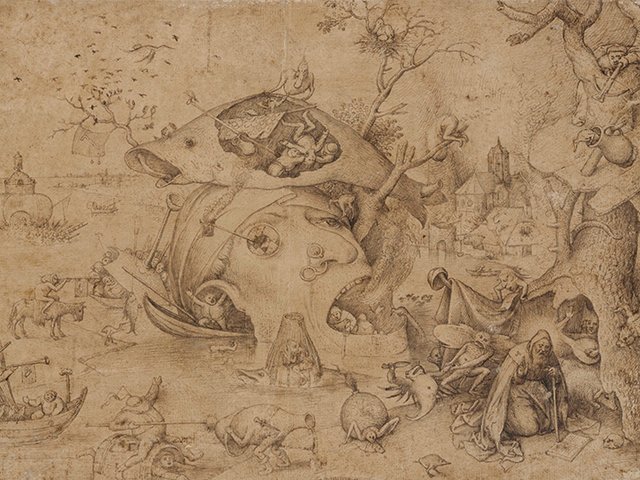Visitors to the National Gallery in London will just be able to make out a tiny ghostly baby hand, tugging at the filmy hem of Minerva’s robe, when Peter Paul Rubens’s Judgement of Paris goes back on display today (Tuesday 18 June) after 14 months of conservation work. The little hand, and the faint outline of a pair of chubby baby legs, are the clues to the picture Rubens actually painted.
“It looks great—but we are not seeing the picture Rubens intended,” curator Bart Cornelis says.
Conservator Britta New adds: “It was a real question of how far we went—we could take off everything back to the original Rubens layer, but how much would be left and in what condition? We might end up leaving the picture as an ugly wreck.”
The painting of Paris, a character of Greek mythology known for sparking the Trojan War, holding a golden apple while he ponders which of the three rosily naked goddesses deserves the prize of being “the fairest one”, is one of the best known and most popular in the National Gallery collection. It was created in the last decade of the life of the Flemish artist, when he was at the height of his powers.
It may have remained in his studio until his death in 1640, and was so admired that he painted several versions, now in the collections of museums including the Prado in Madrid. This London one, believed to be the original, was bought by the National Gallery in 1844, but much of its history is hazy after 1640 until it was catalogued in the Duc d’Orleans’s magnificent collection in 1727.
It disappears again for decades after its arrival in England in 1792, at a time when British dealers were scooping up aristocratic collections in the wake of the French Revolution, until the gallery bought it at a Christie’s auction.
Rubens himself—famous, in Cornelis’s words, for “fiddling about with his pictures”—made many changes, including adding extra strips to enlarge the oak panel, changing the putto crouching at Minerva’s feet and lowering the peacock’s neck so it hisses at Paris’s sheepdog.
However, work by the gallery’s scientific department, including a variety of non-intrusive X-ray and other imaging techniques, have revealed much more drastic changes made around 1700 by an unknown artist for an unknown owner, possibly the Duc de Richelieu. The result, Cornelis and New say, was to change the narrative completely, with several watchers painted out, leaving it still highly erotic but less voyeuristic. In the original, Paris had just sat down, one leg still outstretched and the apple in his lap, while Mars instructed the goddesses to strip and putti helpfully tugged at their robes, watched by satyrs hiding in the tree. In the revised version, Paris, his shepherd’s straw hat gone and his face made more romantically handsome, has made his choice and is stretching out the apple to Venus—the disasters of the abduction of Helen, Venus's reward to Paris, and the Trojan War will follow.

A variety of non-intrusive X-ray and other imaging techniques have revealed lost details such as a straw hat that was originally placed on Paris’s head
“The art market was as volatile and strange then as now,” Cornelis points out, adding that the changes were made at a time of intense debate over the virtues in art of lush Rubens colour versus pure Poussin line. Colour won, the curator says, at least in the 18th century, adding that he is pondering putting together an exhibition tracing its inheritance through Rubens, Boucher in the 18th century and on to Renoir in the 19th century. Given the enduring puritanical suspicion of voluptuous colour, he suggests mischievously that “we could call it A History of Bad Taste from Rubens to Renoir”.
New has taken the finish back to before mid-20th-century work undertaken at the gallery, removing discoloured varnish and touching in a few losses, revealing details previously lost in murk—including Minerva’s glaring owl and her terrifying Gorgon shield. New could have completely painted out the ghostly figures of the lost putti, but has left them as clues to the work’s complex history.

Conservator Britta New retouching The Judgement of Paris during the conservation treatment
© The National Gallery, London
The long process of research and work, and the final touch of putting the glowingly restored picture into a handsome 17th-century gold frame specially bought for it, has been funded by the Bank of America through its Art Conservation Project, which since 2010 has supported more than 260 projects of non-profit cultural organisations across 40 countries.
- The Judgement of Paris, by Peter Paul Rubens, on display free at the National Gallery London, from 18 June




